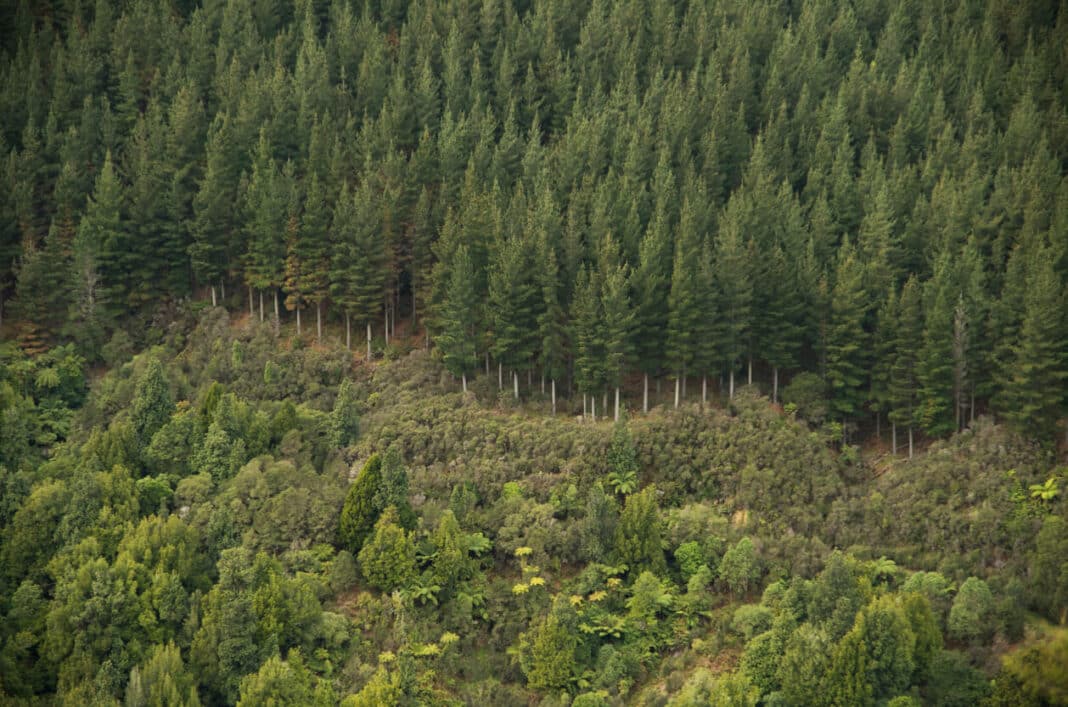Forests are nature’s sponges during significant rain events, absorbing nearly 60% of rainfall, according to new research provided by New Zealand-based Scion.
This absorption process prevents immediate water flow across the terrain and into waterways, significantly reducing potential downstream flooding.
The high-resolution data that led to these revelations were collected from Mahurangi Forest near Auckland during major rain events, including Cyclone Gabrielle.
The data collection is part of the broader Forest Flows research programme, a five-year initiative launched in September 2019.
Backed by the NZ Ministry of Business, Innovation and Employment (MBIE), this project deploys over 1,700 sensors across ten national forests to capture data at five-minute intervals, offering unprecedented insights into forest hydrology.
Dr Dean Meason, a leading scientist at Scion, is leading the project.
Renowned globally for his work as a tree ecophysiologist, Dr Meason aims to predict and optimise water use and supply in planted forests through the programme.
He seeks to answer some critical questions: Where is the water? Where is it going? And who gets to use it?
Dr Meason believes their novel approach unveils secrets about how water moves and is stored in catchments.
“Our network of field sensors, meteorological and hydrological equipment has been collecting data for about two years now. A key part of the Forest Flows research is to understand how water moves through forested catchments during and after weather events that range from light rainfall to heavy storms.” Dr Meason continues.
“This type of analysis following extreme weather events hasn’t been done before or at this scale.”
The Forest Flows programme, boasting the world’s largest network of sensors, has yielded a massive volume of data.

For example, despite the substantial rainfall (229mm) during the Auckland Anniversary Weekend and Cyclone Gabrielle, the soil near the surface of Mahurangi Forest remained unsaturated.
The forest retained 60% of the rainfall within its catchment area – including the soil, shallow groundwater, and forest canopy. This process dramatically moderated stream flows.
Ongoing analysis of this pioneering data continues to enhance our understanding of how forests react to extreme weather.
This knowledge will be crucial in forecasting conditions that may trigger catastrophic landslides and floods, enabling authorities and the forestry sector to mitigate potential adverse downstream effects.
Data from Titoki Forest in the Tararua District, another site significantly impacted by this year’s extreme weather events, is also under analysis.
Both Mahurangi and Titoki, radiata pine forests planted on erodible soils, provide real-time data snapshots every five minutes, expediting the data retrieval process.

Supported by the NIWA, the Forest Flows programme spans five catchment areas with varying rainfall.
These remote sites range from Te Oneroa-a-Tōhe in Northland’s far north to Māwhera on the South Island’s West Coast.
Combined with remote sensing data from the University of Auckland and XERRA, Scion’s real-time data offers a comprehensive view of hydrological processes in planted forests.
Given the enormous scale of the data, advanced analysis is carried out using machine learning and artificial intelligence.
This data treasure trove is helping Scion develop a digital twin for each forest catchment, aiding future forest and landscape management decisions.
The findings from this MBIE-funded programme will ultimately shed light on the resilience of New Zealand’s planted forests against floods and droughts.
It will also reveal how water movement through forests could be influenced by climate change, an insight essential for future conservation strategies.






